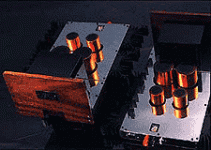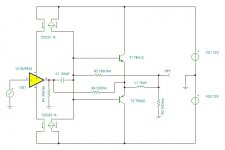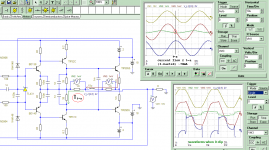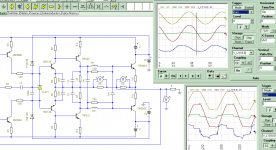. Pioneer first used this topology in 1978 (MZ1) in the top of the range amps, ....
Pioneer MZ1 - 60W - made since 1980.
Thx-RNMarsh
The Beast em All
Wayne, This one is as I heard it in 1997 best of them all, it puts all the left and right competitors tooooo way behind .....
And as a hidden bonus it make a big fears to all the speakers being connected to its OP terminals... no matter who the manufacturer is .....
And Yes THE NEED FOR THE SPEED MATTERS to all competitors ever being compared to . . . .
Some More ....
+ 1

A
What commercially available amps are cfa ................?
Wayne, This one is as I heard it in 1997 best of them all, it puts all the left and right competitors tooooo way behind .....
And as a hidden bonus it make a big fears to all the speakers being connected to its OP terminals... no matter who the manufacturer is .....
And Yes THE NEED FOR THE SPEED MATTERS to all competitors ever being compared to . . . .
Some More ....
+ 1

A

Last edited:
Interestingly, David Nelson was awarded a patent as the inventor of CFA and after that Comlinear produced their first modules (1982). Someone (I think on this thread) pointed out that Pioneer in fact may have been first to market with a CFA topology amp. They've been with us for years . . .
Pinoeer, i cloned their model SX-770 power amps in the mid 70's, upscaled for more power, i still smile when i remember that amp...
Off to the "cave" to layout in sprint ..... 😎
Very well, hardly wait to see singing unit. The input/feedback core should be in very close proximity to the output stage to ensure shortest possible paths to all low level signals, thus reduce parasitic impedances to min. Wishing you best possible layout one can do. Regards L.C.

Interestingly, David Nelson was awarded a patent as the inventor of CFA and after that Comlinear produced their first modules (1982). Someone (I think on this thread) pointed out that Pioneer in fact may have been first to market with a CFA topology amp. They've been with us for years . . .
Remember patents at best are only on a set of claims narrowed as much as necessary to be granted. CFA's as a genre date from the 40's with valves.
Ahh - even longer then than the 1970's which is what I assumed. Thinking about it though, if you don't have a classic Lin structure amp, the other alternative must be something like a CFA.
I have said this before in detail elsewhere -- feedback to an input tube's cathode is now being called CFA for lack of understanding.... done since early tube days. We keep going in circles back to the dawn of mankind on this.
Of course, Scott brings up the important fact of even small changes in evolution in circuitry can warrant a patent.
THx-RNMarsh
Of course, Scott brings up the important fact of even small changes in evolution in circuitry can warrant a patent.
THx-RNMarsh
Last edited:
Yes. There is a lot of curves in OPA datasheets about various values of feedback impedance.The operation going from low current/high Z circuit to high current/low z circuit values/operation with same topology caused the circuit to behave more like CFA in regards to peaking/gain/distortion (both lightly loaded output - this was a line level amp) etc. Might be able to SIM and see now?
Give-me some time to produce sims from my comparison circuits.
Richard, my point was to simplify people's understanding of CFA with a simple definition of the topology.
As there is no fixed limit, there is no point where you can say "Now, it is something else". Agree ?
On my side, i just consider CFAs with high feedback impedance (where emitter capacitance is in action) as sub optimal, or poorly designed ones.
Yes, distortion increase, as the parasitic capacitance is not linear.
One thing is true for me, such amps keep the subtle signature difference comparing with VFA. (Goes on, Wally: bark !)
Interestingly, David Nelson was awarded a patent as the inventor of CFA and after that Comlinear produced their first modules (1982). Someone (I think on this thread) pointed out that Pioneer in fact may have been first to market with a CFA topology amp. They've been with us for years . . .
I just looked at schematic of Panasonic MZ1 (1980) and some areas of the schematic is just shown as a block diagram (Japanese writing inside). Might be a current-mirror? Cant tell from their service manual schematic.
But circuit still used electrolytic cap in gain setting feedback (220mfd bypassed with 2.2mfd). Triple OPS used a separate follower driver per each final output transistor.
Thx-RNMarsh
Last edited:
It is just high frequency isolation using inductor, there are no current dumped, the current is still flow.
But if you compare your original TINA schematic with this current-dumping topology (attached), you'll see why I pointed out the similarity!
(The bridge values are for illustration, and not the correct ones for proper bridge balance!)
Attachments
Last edited:
Can you post the schematic up Richard - or if its up can you point me to the post#?
Its interesting, but one could hypothersize that those early CFA based designs may have sounded quite good against their VFA cousins at the time.
Why?
Because I dont think most designers got on top of how to put together a good VFA until the 1990's - there were a few who had their act together (a few leading lights on this forum of course - JC, DS and RC) , but most just piled on the feedback without understanding the sublteties and as we know, this lead to quite some problems.
Its more difficult to run into those issues with a CFA, because of the single gain stage and easier compensation.
(my comment is not a dig at VFA - just an observation)
Its interesting, but one could hypothersize that those early CFA based designs may have sounded quite good against their VFA cousins at the time.
Why?
Because I dont think most designers got on top of how to put together a good VFA until the 1990's - there were a few who had their act together (a few leading lights on this forum of course - JC, DS and RC) , but most just piled on the feedback without understanding the sublteties and as we know, this lead to quite some problems.
Its more difficult to run into those issues with a CFA, because of the single gain stage and easier compensation.
(my comment is not a dig at VFA - just an observation)
Last edited:
But if you compare your original TINA schematic with this current-dumping topology (attached), you'll see why I pointed out the similarity!
(The bridge values are for illustration, and not the correct ones for proper bridge balance!)
Yes it has similarity. If it is called as current dumper because of power wasted by phase shift, inductor at bases also did it but less.
Inductor help to prevent gained reverse phase at fast-feedback by placing OPS more as outsider.
See attached images for its phase shift, inductors at bases are better.
Attachments
Last edited:
Jan so you believe that the current sampling of the output emitter-resistor is of significance, compared
Just kidding. This circuitry, of sampling the output current, used to be the definition of current feedback until marketing ran with it and you all swallowed it hook and sinker 😉
Jan
Hopefully I've summarized it succinctly.
🙂
Yes you did, albeit not completely correct.
Since the original definition of current feedback was that the current is the controlled variable, and you are running with the marketing version of the term, we'll never see eye to eye. On this.😉
Jan
Are we going to spend the next ten years to discuss the merits of this unfortunate appellation ?Since the original definition of current feedback was that the current is the controlled variable, and you are running with the marketing version of the term, we'll never see eye to eye.
Accuphase is high end amp but not the only ones, Myryad comes to mind, they have been using CFA since late 80s. One of the 2 Sony high end amps is a CFA. Pioneer first used this topology in 1978 (MZ1) in the top of the range amps, they have a couple of US patents on it. They were also the pioneers of the CFA topology using JFets as inputs and hold patents with regard to these. They have too many CFAs to mention all here.
The complete ranges of NAD amplifiers except for some AV recievers are since about 2003 all CFA designs.
Renkus Hein which is PA manufacturer uses CFA.
I can carry on with the list but it will get very long.
I'm familiar with NAD and Accuphase, Sony and Pioneer i have never heard one worthy to take home. Nad's are OK, there really big amplifier is not bad, Accuphase is in a different league and IMO , excellent stuff.
Wayne, This one is as I heard it in 1997 best of them all, it puts all the left and right competitors tooooo way behind .....
And as a hidden bonus it make a big fears to all the speakers being connected to its OP terminals... no matter who the manufacturer is .....
And Yes THE NEED FOR THE SPEED MATTERS to all competitors ever being compared to . . . .
Some More ....
+ 1
AView attachment 388490
What amplifier is that ...?
Remember patents at best are only on a set of claims narrowed as much as necessary to be granted. CFA's as a genre date from the 40's with valves.
Interesting ....

"Its more difficult to run into those issues with a CFA, because of the single gain stage and easier compensation."
Bonsai,
Is this an absolute in cfa design or can you in fact have more than one gain stage and still follow the feedback topology that has been the subject of this entire discussion?
Bonsai,
Is this an absolute in cfa design or can you in fact have more than one gain stage and still follow the feedback topology that has been the subject of this entire discussion?
What amplifier is that ...?
Interesting ....
Hello Wayne,
Those were the most resolution & speediest CFA Power Amps I have ever heard, and they drive Apogees Scintillas like a charm, not sure if still in production,..... dual monos, ... Like ''electronics microscope'' music sound resolution and Bugatty Veyron accelerations . ..
I Heard the 4 monos to drive the Scintillas, separate the Bass panels and Mid-Hi Panels second Pair .... Unforgeable memories & Dreams still lasts . . .
If You hover with mouse over bolder Blueish text on previous post and this one and click on each... there's Links under for more reading . .... 🙂
Some quick Specs:
Specifications
FREQUENCY RESPONSE : DC - 1.0MHz (-3dB) dictated by input filter
(without filter 10 Mega Hertz).
POWER OUTPUT : 100WRMS per channel into 8 Ohms with no
more than 0.05% T.H.D.
DYNAMIC HEADROOM: 0dB due to stiff regulated Power Supply
DAMPING FACTOR: Greater than 500 wideband
SLEW RATE: Greater than 1000V/us small and large signal
T.H.D. : Less than 0.05% wideband
I.M.D.(S.M.P.T.E.): Less than 0.05% wideband
SIGNAL/NOISE : -117dBV unweighed input shorted
SENSITIVITY: 0.08VRMS in for 100w out (28dB)
INPUT IMPEDANCE : 130kOhms in parallel with 82pF
Cheers, 😉
- Home
- Amplifiers
- Solid State
- CFA Topology Audio Amplifiers


